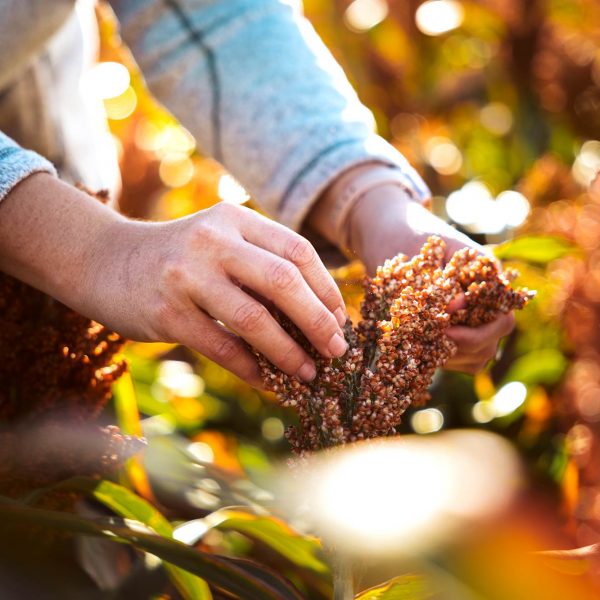Sorghum Grain Color
By Brent Bean, Sorghum Checkoff
Lubbock, Texas
One of the unique features of sorghum is its variation in grain color. There is nothing prettier than seeing a seed production field with multiple grain colors. The color of the grain can vary from red, lemon-yellow, white to black. What determines seed color is not as simple as just the color of the grain seed coat.
Color variables
The actual color is determined primarily from three variables. These are the seed coat (pericarp) color and thickness, the presence or absence of a sub-layer beneath the pericarp called the testa, and the endosperm color and texture. The pericarp itself can be red, yellow or white (colorless). The thinner the pericarp is the more influence the testa and endosperm will impact the final color.
The testa will be yellow or brown but is seldom present in U.S. sorghum. This is because the testa contains tannin which makes the grain less desirable for the animal feed and consumer food industry. The exception to this is Onyx sorghum, which is black and burgundy sorghum high in antioxidants and used for specialty products.
The endosperm of the sorghum seed is either white or yellow and influences the seed color when the pericarp is thin and transparent.
Color preference
From a nutrition standpoint the color of the grain makes little difference. However, certain export markets prefer various colors of grain. For example, the Chinese prefer a red colored grain for the production of an alcoholic drink popular in the country.
In the U.S. the poultry and food industries prefer white grain free of plant pigment stains. The stains come from colored (red or purple) glumes which are the two dry, leaf-like structures that surround the kernel. To meet this need, the sorghum industry has developed high yielding grain sorghums with white grain and tan glumes. The yield potential of these food-grade sorghums was evident in the 2016 national grain sorghum yield contest, where a food-grade sorghum placed third nationally with a yield of 198 bushels.
One negative characteristic of the current food-grade sorghum hybrids is they tend to be more susceptible to grain mold. Fungi infection that leads to grain mold occurs during flowering under wet, humid and warm conditions. When planting a food-grade sorghum hybrid, consider planting dates that avoid these conditions at flowering if possible.
Many producers are under the impression that light colored seed will not germinate as well as darker colored seed. However, recent studies have not shown a clear advantage of one grain color over another. In a germination and seed vigor trial conducted by the University of Nebraska, grain color did not influence warm germination or seed vigor. There was, however, a slight advantage of the red seed color over white seed under field conditions. Interestingly, under cool conditions in laboratory tests, hybrids with a purple glume color had higher germination and seedling vigor. It should be noted that there was considerable variation between lines, suggesting that other factors are involved.




